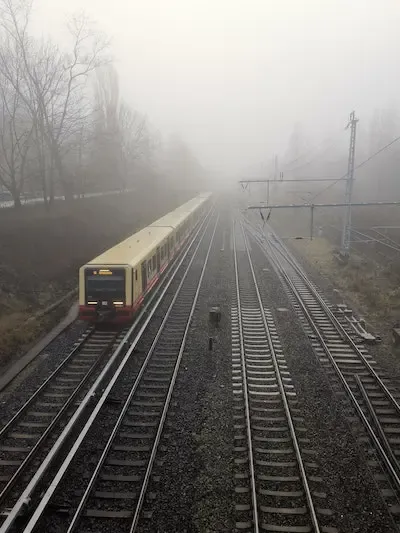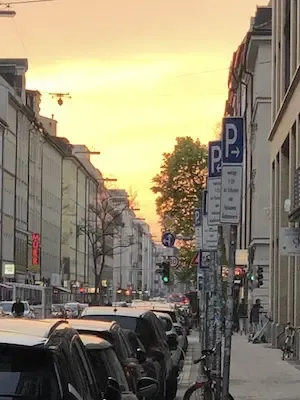The Ultimate Europe Packing List - Travel Essentials

Essential Packing Tips for Exploring European Cities
European cities boast a rich historical legacy, dating back to eras long before the invention of automobiles. Consequently, their urban layouts were originally crafted around narrow streets, compact city centers, and a keen emphasis on pedestrian accessibility.
Moreover, these cities have invested in efficient public transportation systems, encompassing buses, trams, subways, and trains, offering residents and tourists an alternative to car travel.
The integration of mixed-use zoning further enhances the European urban experience, with homes, shops, and eateries often located in close proximity, making walking to everyday destinations a breeze. In addition, European cities are champions of urban planning that prioritizes pedestrians and cyclists, featuring pedestrian-only zones, bike lanes, and wider sidewalks. Meanwhile, some American cities, notably in the western United States, lean heavily on automobiles due to factors like urban sprawl, car-centric infrastructure design, limited public transport options, and zoning laws that encourage the separation of residential and commercial areas, diminishing the convenience of walking to daily destinations.

Based on this principles, here are Eleven things you may need when traveling to Europe and exploring it’s cities,
Clothes
- Jeans
- Sandals
- Swimwear
- Skirts
- Dresses
- Shorts
- Tank tops
- T-shirts
- Shirts
- Pants
- Belt
- Sleepwear
- Pajamas
- Bras
- Underwear
- Shoes
Hygiene
- Sunscreen
Buy
- Tampons
Buy
- Makeup remover
Buy
- Makeup
- Shaving cream
- Razor
- Comb
- Towel
- Deodorant
Buy
- Shampoo
- Soap
- Toothpaste
- Toothbrush
Buy
Accessories
- Passport Holder
- Travel Insurance
- First Aid Kit
Buy
- Travel Journal
- Reusable Shopping Bag
Buy
- Backpack
- Camera
- Travel Adapter
- Powerbank
Buy
- Water Bottle
Buy
- Headphones
Buy
- Fan
Documents
- Travel insurance documents
- International driver license
- Driver license
- Passport
Entertainment
- Speakers
Buy
- Binoculars
Buy
- Tablet
- E-reader
Buy
- Puzzle
- Board games
- Playing cards
Buy
- Book
Read also our Vacation Packing List to know everything that you should take on your next trip, not just for Europe
Transport
Getting around while traveling can make or break your adventure. Your choice of transportation can turn an ordinary trip into an extraordinary one. Whether you’re planning to hop across countries or dive headfirst into a city’s vibrant chaos, you’ve got options. Let’s break it down:
Traveling through More Countries
If you decide to travel through various countries you may be used to book a flight, but you may want to thing about it two times when you’re in europe. These following options can be much practic, and sustainable.
Train Travel (Interrail)

Taking a train in Europe it’s an excelent option, there are multiple options to take this and they offer some time to relax from visiting places. Plus, the train system is quite better as in other Countries, it’s common for young people to use the train during the night to sleep, instead of booking an hotel. Allowing this the option to use the travel to rest.
There is Interrail. It’s a popular train travel pass that allows travelers to explore Europe by train. It is available to European residents and non-European residents alike and provides a flexible and cost-effective way to travel across Europe’s extensive railway network.
Interrail passes come in various forms, such as the Global Pass, which covers multiple countries, and One-Country Passes, which focus on a specific country. It’s essential to check the Interrail Website to consult the information on available passes, pricing, and eligibility criteria, as these details can change over time. Overall, Interrail is a convenient and popular choice for exploring the diverse landscapes and cultures of Europe by train.
- Limited Flexibility: May not cover all routes.
2. Renting a Car - Blaze Your Own Trail
For those hungry for adventure off the beaten path, renting a car is the name of the game. This is your chance to be the captain of your journey, especially in places like the USA, Australia, or New Zealand with their sprawling road networks. With a car, you can call the shots, unearth hidden treasures, and reach those places that public transport just can’t touch. Just make sure you know the local rules of the road before you rev up.
Staying in a City
When your plan is to explore a new City in Europe we don’t recommend by any means an auto. Europe’s cities are usually a nightmare to drive, they’re to small and to full of people and other cars. The best way, if you’re up to, is to just get on your legs and start exploring. Here we explain all the options, choose the one that suit you the best.
1. Walking - Get Lost in the City’s Soul

For a truly immersive city experience, get around with your feet! Walking is your ticket to the heart and soul of a city. It’s your chance to soak up the local culture, stumble upon hidden gems, and savor every bit of what makes that city unique. Lace up your comfiest kicks, grab a map (or a trusty navigation app), and embark on your very own urban adventure.
2. Public Transport - Discover the incredible Infrastructure in Europe
Most cities have your back with an extensive public transportation network. Buses, trams, subways, and trains – they’ve got it all. Grab a travel card or pass and unlock access to these urban arteries. Not only will it save you some cash, but it’s also a greener way to get around. Public transport is your ticket to all the must-see spots and cool neighborhoods within the city.
3. Scooter and Bike Services - Go Green and Get Moving
Cities worldwide are all about going green with electric scooters and bike-sharing services. It’s not just eco-friendly; it’s also a blast. Grab the app, spot a scooter or bike nearby, and unlock your ride with your trusty smartphone. Zip around the streets, explore parks, and reach your destinations at lightning speed while soaking up that fresh city air. Just remember: safety first, helmet when needed.
Weather
The weather in Europe is highly dependent on when and where you visit. The continent’s vast expanse means that temperatures can vary significantly between northern and southern regions.
In the northern countries like Finland and Sweden, you’ll encounter cold climates, even during the summer months, so it’s crucial to pack warm clothing. On the other hand, southern countries such as Spain and Italy enjoy warmer temperatures, making lightweight clothing a safe bet for the summer. However, it’s essential to be prepared for the possibility of strong sun, necessitating sun protection.
The countries in between experience a mix of temperatures, so checking the specific weather forecast for your destination is always a wise move.
Daylight Hours
Daylight hours in Europe exhibit a stark contrast between the northern and southern regions.
Northern countries, especially in the winter, have limited sunlight, with some places seeing just a couple of hours a day. However, during the summer, the situation flips, and you can enjoy up to 18 hours of daylight in these areas.

In contrast, southern countries, closer to the equator, experience less variation in daylight hours between seasons.
For more information on time differences in Europe, you can refer to this time differences in Europe resource.
Cultural Particularities in Europe
When exploring Europe, it’s essential to be aware of the diverse cultural nuances that can vary significantly from one region to another. Europe is a continent with a rich tapestry of languages, traditions, and histories, and understanding the cultural particularities can greatly enhance your travel experience.
One crucial aspect to keep in mind is the importance of knowing where you’re visiting. For instance, in Barcelona, speaking Spanish is perfectly acceptable and widely understood. However, it’s worth noting that the city is also the capital of Catalonia, and many locals are proud of their Catalan heritage. While most Catalans are bilingual and speak both Spanish and Catalan, some may appreciate it if you make an effort to greet them with a simple “Bon dia!” (Good morning) or “Gràcies” (Thank you) in Catalan. This small gesture can go a long way in fostering positive interactions and respecting the local culture.

Similarly, across Europe, each country and even regions within countries have their own unique customs, languages, and social norms. Whether you’re enjoying the café culture in Paris, exploring the historic neighborhoods of Rome, or savoring the flavors of Greek cuisine in Athens, taking the time to learn about and respect the local customs can lead to more enriching and enjoyable travel experiences.
In essence, embracing the cultural diversity within Europe and being mindful of the specific customs and languages in the region you’re visiting not only demonstrates respect for the local culture but also opens doors to deeper connections and a greater appreciation of the places you explore.



